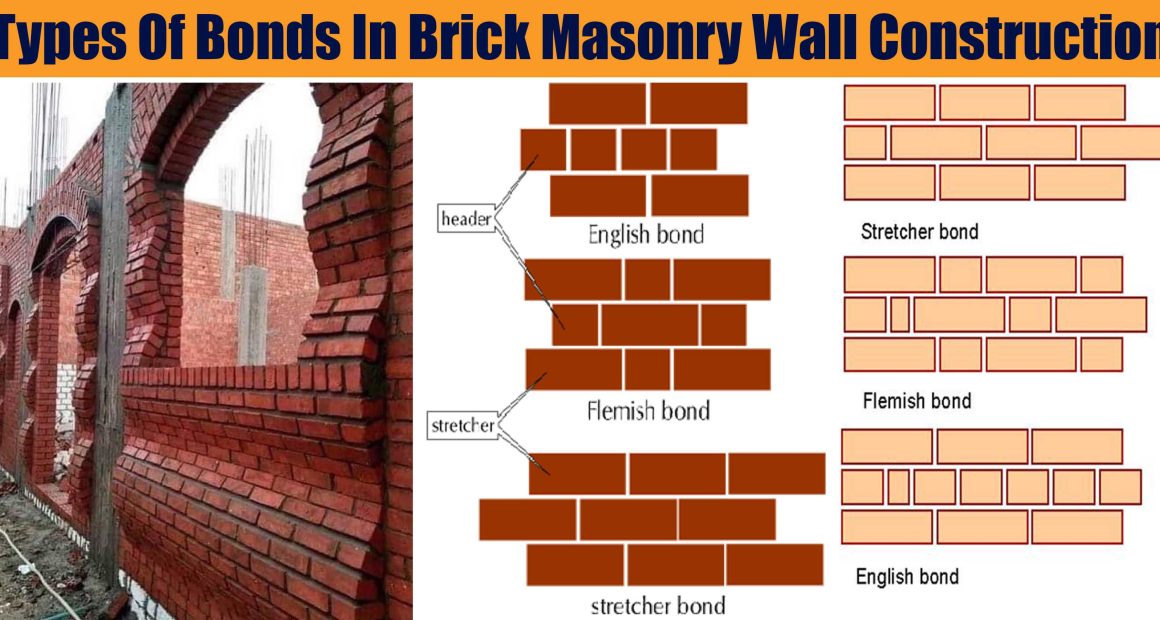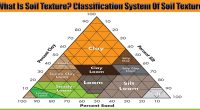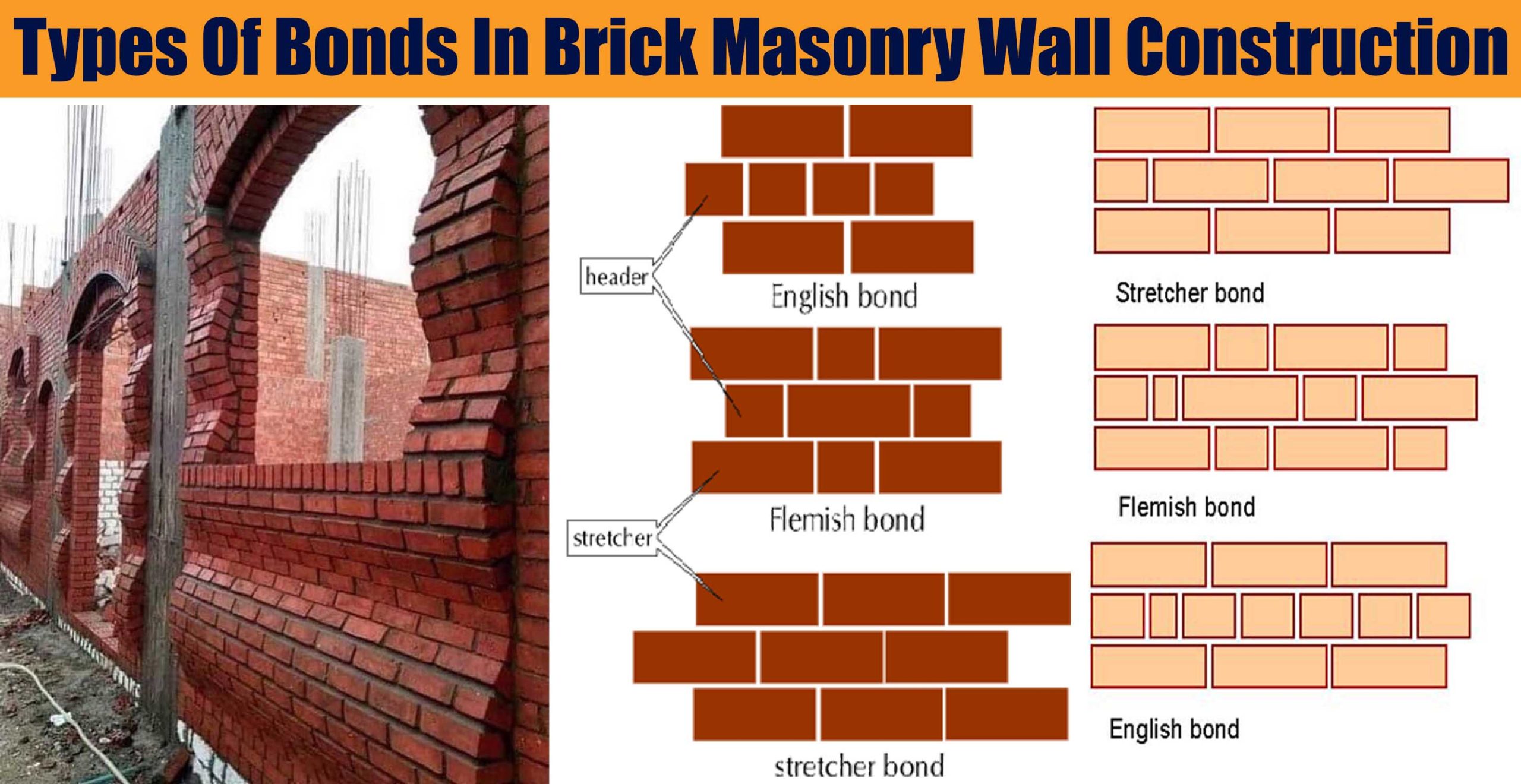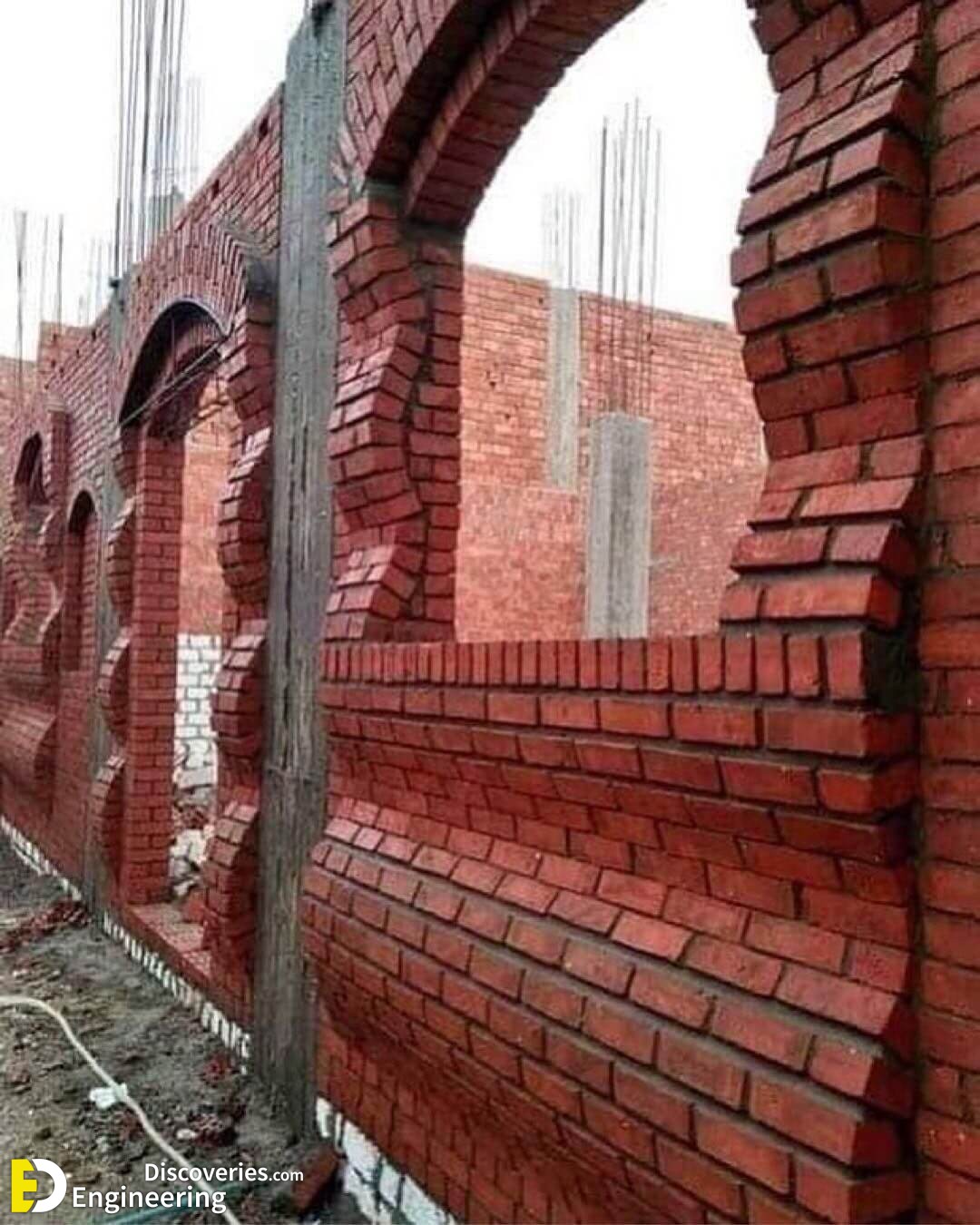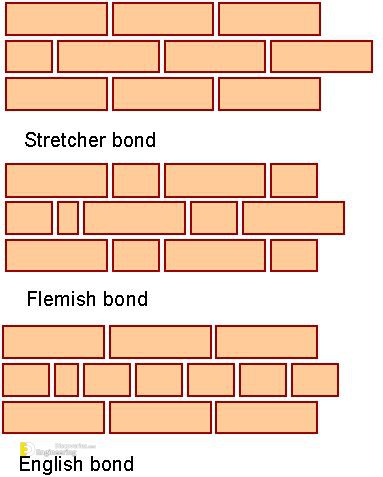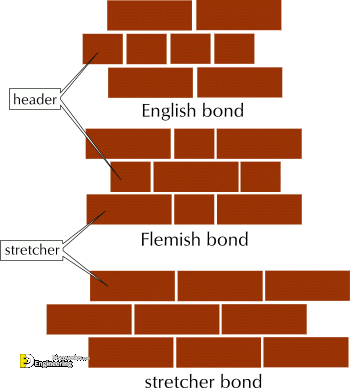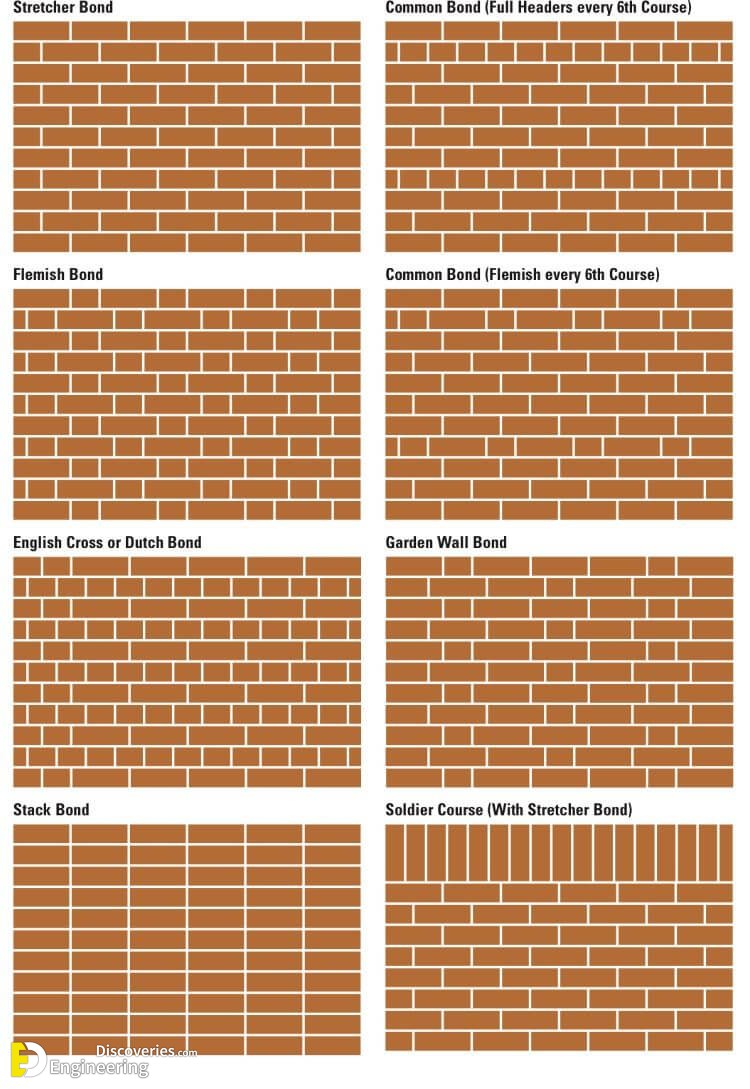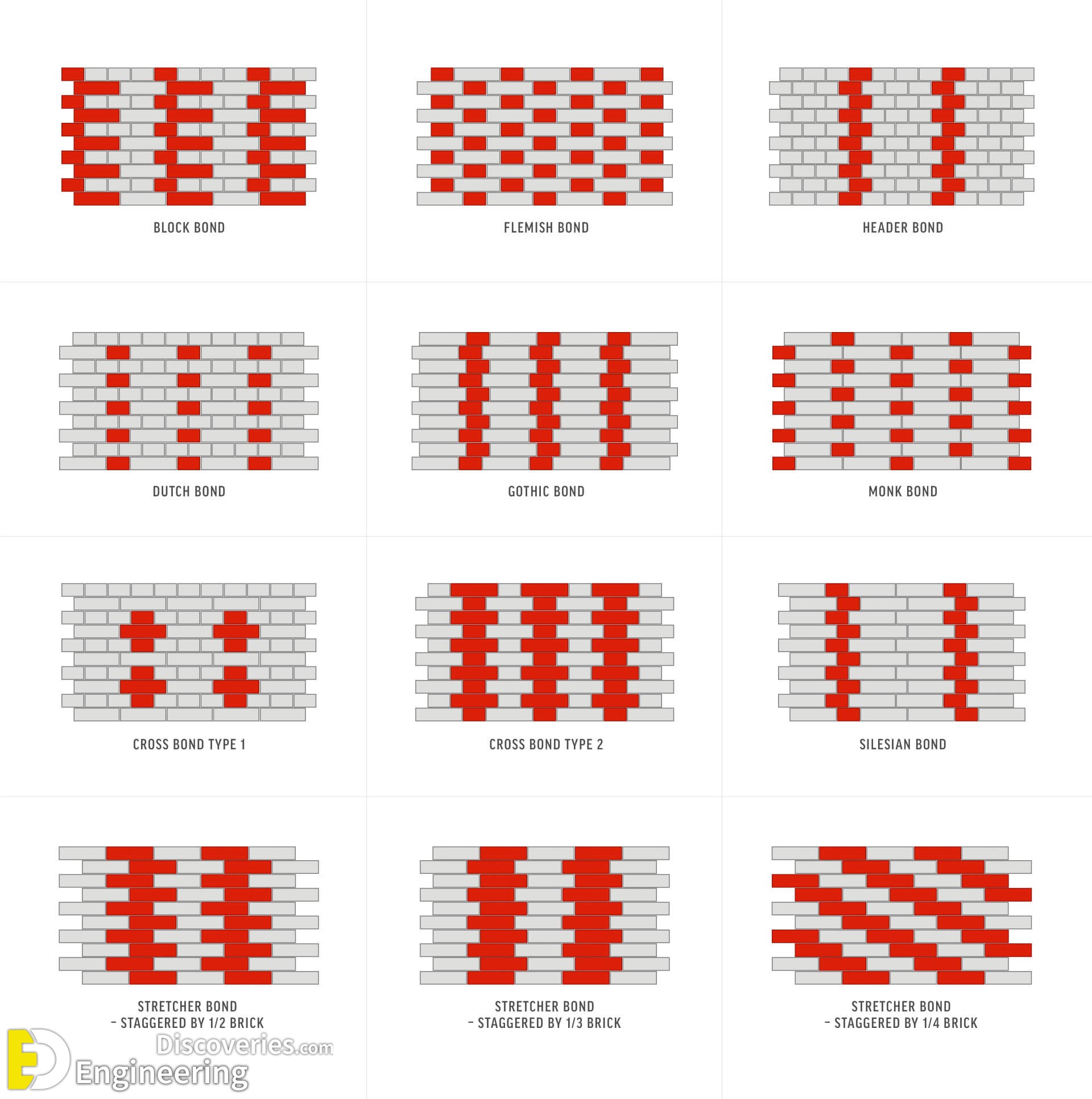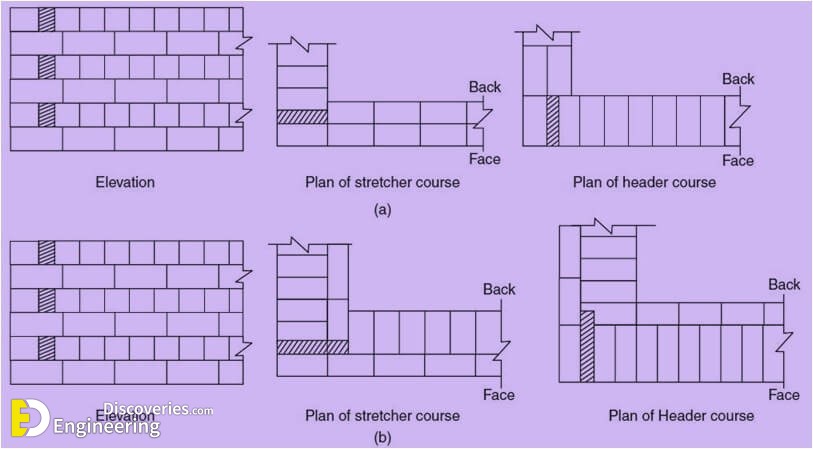Types of bonds in brick masonry wall construction are classified based on the laying and bonding style of bricks in walls. The bonds in brick masonry are developed by the mortar filling between layers of bricks and in grooves when bricks are laid adjacent to each other and in layers in walls. Mostly used material for bonds in brick masonry in cement mortar. Lime mortar and mud mortar are also used.
Types of Bonds in Brick Masonry Wall Construction
The most commonly used types of bonds in brick masonry are
1- Stretcher bond
2- Header bond
3- English bond and
4- Flemish bond
Other types of bonds are
1- Facing bond
2- Dutch bond
3- English cross bond
4- Brick on edge bond
5- Raking bond
6- Zigzag bond
7- Garden wall bond
1- Stretcher bond
A stretcher is the long face of the brick as seen in the elevation. In the brick of size 190 mm × 90 mm × 90 mm, 190 mm × 90 mm face is the stretcher. In stretcher bond masonry all the bricks are arranged in stretcher courses as shown in Fig-1. However, care should be taken to break vertical joints. This type of construction is useful for the construction half brick thick partition wall.
2- Header bond
A header is the shorter face of the brick as seen in the elevation. In a standard brick, it is 90 mm × 90 mm face. In header bond brick masonry all the bricks are arranged in the header courses as shown in Fig-2. This type of bond is useful for the construction of one brick thick walls.
3- English bond
In this alternate courses consist of headers and stretchers. This is considered to be the strongest bond. Hence it is a commonly used bond for the walls of all thicknesses. To break the continuity of vertical joints a brick is cut lengthwise into two halves and used in the beginning and end of a wall after the first header. This is called queen closer. (Refer Fig-3). Fig-3 shows typical one brick and one and a half brick thick wall with English bond.
4- Flemish bond
In this type of bond, each course comprises of alternate header and stretcher [Fig-4]. Alternate courses start with stretcher and header. To break the vertical joints queen closers are required if a course starts with a header. Every header is centrally supported on the stretcher below it.
Flemish bonds may be further classified as
- Double Flemish Bond
- Single Flemish Bond.
In case of a double flemish bond, both faces of the wall have flemish look, i.e. each course consist of alternate header and stretcher, whereas single flemish bond outer faces of walls have flemish look whereas inner faces have the look of English bond [Fig-4 (a), (b)]. I
Construction of Flemish bond needs greater skill. It gives a more pleasing appearance. But it is not as strong as English bond. If only pointing is to be used for the finished wall, a flemish bond may be used to get a good beautiful view. If plastering is going to be used, it is better to use English bond.
